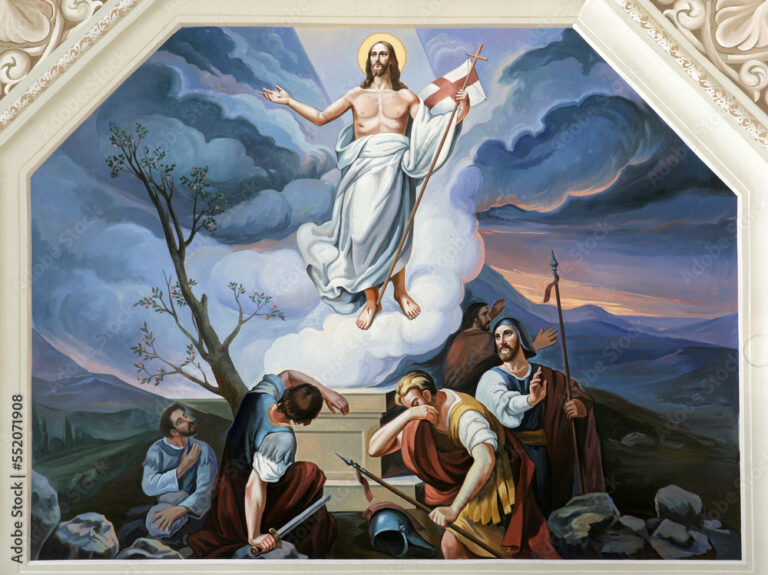The Standardization of Lent
The formal standardization of Lent within the church occurred in the latter half of the 4th century. In 325, Roman Emperor Constantine I convened the First Council of Nicaea (present-day İznik, Turkey) which discussed, among other matters, a 40-day Lenten season of fasting. While not definitively established at this council, the practice of observing Lent gained wider recognition and momentum.

It was not until the Council of Laodicea (present-day Eskihisar, Turkey) in 382 that the observance of Lent became mandatory for all Christians. This council formalized the 40 days of reflection, repentance, seeking forgiveness, and recommitting oneself to the Christian faith through prayer, fasting, abstinence from indulgences, acts of charity, and penance before Easter, solidifying Lent’s place within the Christian calendar.
This tradition arose from the early church’s practice of preparing converts (catechumens) for baptism at Easter. As these individuals underwent their final preparation, existing members of the church community joined them in prayer and abstinence, both to support the catechumens and to renew their own baptismal commitments.

The Biblical Foundations of Lent
The 40-day duration of Lent originated likely from symbolic periods of waiting and transformation found throughout the Bible. It rained for 40 days at the time of the Great Flood. Moses spent 40 days and nights fasting on Mount Sinai before receiving the Ten Commandments (Exodus 34:28). Similarly, Elijah undertook a 40-day and 40-night journey to Mount Horeb, where he encountered God (1 Kings 19:8). In the New Testament, Jesus himself followed this pattern, withdrawing to the wilderness for 40 days and nights of fasting and prayer before commencing his public ministry (Matthew 4:2). These instances, along with others throughout scripture, contribute to the symbolic weight of the 40 days in Lent, a time for Christians to reflect, seek repentance, and prepare spiritually for the celebration of Easter.
Lent in the western and the eastern churches
In the western Christian tradition, Lent typically begins on Ash Wednesday which falls 46 days before Easter Sunday, and concludes on Holy Saturday. However, it’s important to note that this 40-day calculation excludes six Sundays. Christians traditionally observe Sundays throughout the year as mini-feasts of the Resurrection, offering a reason for a brief pause in the practice of fasting, which is typically observed on weekdays during Lent.
In eastern Christian denominations, the approach to Lent differs slightly. While weekdays are observed as fasting days, Sundays are also included in the Lenten period. This practice extends the duration of Lent to 46 days.
The Syro Malabar Syro Malakara Catholic Church, an eastern Catholic church in Kerala, India, follows a unique Lenten observance. Their Lenten season begins on Clean Monday, which falls seven weeks before Easter Sunday and concludes on Holy Saturday. Unlike the western and eastern traditions, the Syro-Malabar Catholic Church includes all Sundays within this period as part of Lent. This practice results in a 49-day Lenten season culminating in the celebration of Easter on the 50th day.

Conclusion
The transition from revelry to repentance, as embodied in the dynamic interplay of Carnival, Shrovetide, and Lent, offers a nuanced journey within the Christian calendar. Carnival’s exuberant celebrations foster a sense of communal joy and provide a final opportunity for indulgence before the introspective season ahead. Shrovetide acts as a vital bridge between these contrasting experiences, fostering spiritual preparedness through acts of confession and introspection. Finally, the solemn onset of Lent marks the beginning of a period characterized by fasting, contemplation, and the quest for forgiveness, culminating in the symbolic renewal of Easter.
Beyond its religious significance, this journey speaks to a broader human experience of celebration, introspection, and transformation. It encourages us to embrace the full spectrum of human emotions, from the exuberance of joy and indulgence to the solemnity of reflection and repentance. Ultimately, it serves as a profound call to personal growth and spiritual rejuvenation, reminding us of the enduring potential for redemption and hope within the human spirit.

Beyond Celebration: The Significance of Easter (**New Section)
While Carnival and Shrovetide mark a period of pre-Easter festivity, the true culmination of this Christian journey lies in Easter Sunday. This sacred day celebrates the resurrection of Jesus Christ, signifying hope, new life, and spiritual renewal. The preceding seasons of Carnival and Lent, with their contrasting themes of celebration and reflection, ultimately serve as a preparatory journey towards this joyous occasion.
The Christian calendar, through the interplay of Carnival, Lent, and Easter, offers a nuanced experience encompassing celebration, introspection, and spiritual growth. Carnival’s exuberance fosters joy and community, while Lent encourages reflection and repentance. Ultimately, this journey culminates in the transformative celebration of Easter, a testament to the enduring human spirit and the potential for hope and renewal.
All Images: freeimages.com
Sacaria Joseph is an Assistant Professor in the Department of English at St. Xavier’s College, Kolkata. Having pursued his undergraduate studies at St. Xavier’s College, he furthered his academic journey by obtaining a Master of Arts degree in English Literature from Pune University, a Master of Philosophy from Jadavpur University, Kolkata, and a PhD from Visva-Bharati University, West Bengal. In addition to his academic pursuits, he writes on a wide array of subjects encompassing literature, philosophy, religion, culture, cinema, politics, and the environment.








